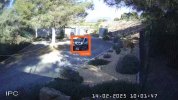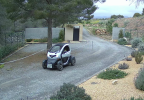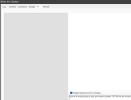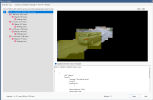Blue Iris is canceling AI alerts with "nothing found" when there was clearly something there.
- Thread starter Statler
- Start date
You are using an out of date browser. It may not display this or other websites correctly.
You should upgrade or use an alternative browser.
You should upgrade or use an alternative browser.
Thank you very much for taking the time to answer.Do you have it saving the .dat files?
Between the uniqueness of that vehicle and the color matching the surrounding, I can see how it could miss that.
I am saving the .DAT files, it seems. What can I do with them?
The vehicle is a bit "unique" (thanks for being nice) but in my earlier installation (which I had to delete because I just started on a fresh installation of Windows11) it would easily be recognized. No, the car is not the issue. Not one of my cameras neither shows the orange squares anymore nor does it mark any object in any cameras as "found".


It misses EVERYTHING on all cameras. So the issue is really not about contrast and settings. I have just fed the analyzer with a DAT-file of a guy with a red jacket and a dog. AI misses dog and the man.
EDIT: ALPR isn´t working either ...
EDIT: ALPR isn´t working either ...
Rebooted, waited for some movement in the driveway and AI didn´t detect anything.
I uploaded the detection response to ChatGPT and it explained the following. Will work on that and report back.
The response indicates that the YOLOv5 object detection model did not detect any objects in the given image. Here are some possible reasons why.
I uploaded the detection response to ChatGPT and it explained the following. Will work on that and report back.
The response indicates that the YOLOv5 object detection model did not detect any objects in the given image. Here are some possible reasons why.
1. Input Issues
- Empty or corrupted image: Ensure the image provided to the model is valid and correctly loaded.
- Incorrect image format: Some models have issues with certain formats (e.g., CMYK vs. RGB). Try using JPEG or PNG.
- Low resolution or poor quality: If the image is too small or blurry, the model may fail to detect objects.
2. Model Configuration Issues
- Incorrect confidence threshold: If the threshold is set too high, the model might filter out valid detections. Try lowering it.
- Wrong model version or weights: Ensure you’re using the correct model version and trained weights.
- Wrong object classes: The model might not be trained to detect the objects present in the image.
3. YOLOv5 Inference Issues
- Incorrect pre-processing: If images are not resized or normalized properly before feeding them into YOLOv5, detection can fail.
- Incorrect inference settings: Check if the model is set up to detect objects at multiple scales.
- GPU issues: If the model is running on a GPU but encounters memory or driver issues, inference might fail.
4. Environmental or Scene Problems
- Objects too small or occluded: If objects are too tiny or hidden, YOLOv5 may not detect them.
- Bad lighting conditions: Poor contrast or extreme brightness/darkness can hinder detection.
- Unusual perspectives: If the image angle is too extreme, the model might not recognize objects correctly.
How to Debug?
- Log the image input and check if it’s valid.
- Lower the confidence threshold.
- Try running YOLOv5 inference on a known working image.
- Check the model's training classes and see if they match the expected objects.
- Enable debugging/logging for the detection pipeline.
Thanks, @wittaj for your efforts. I managed to find the Codeproject AI explorer which helped quite a bit to track down the issue by manually uploading pictures and having them checked. As I didn´t receive a response there either, I have opened the firewall on port 32168 and installed YOLO 5.6.2.
Now the AI is producing valid responses, but still needs some fine tuning as seen in the picture. I might have to put this and other cameras in an enclosure so the rain (and spider webs) will make less noise.

Now the AI is producing valid responses, but still needs some fine tuning as seen in the picture. I might have to put this and other cameras in an enclosure so the rain (and spider webs) will make less noise.

CrazyAsYou
Getting comfortable
(and spider webs) will make less noise.
Buy a cheap can of silicone spray, cover the camera lens/glass/IR lights with a cloth using one hand and with the other hand spray the whole camera body and an area 6-12 inches all around the camera/mount - repeat this every 4months (maybe more often in Autumn/Fall) you'll have 90% less spiders/webs, the one below can be bought for about £1.20 in places likes home bargains




